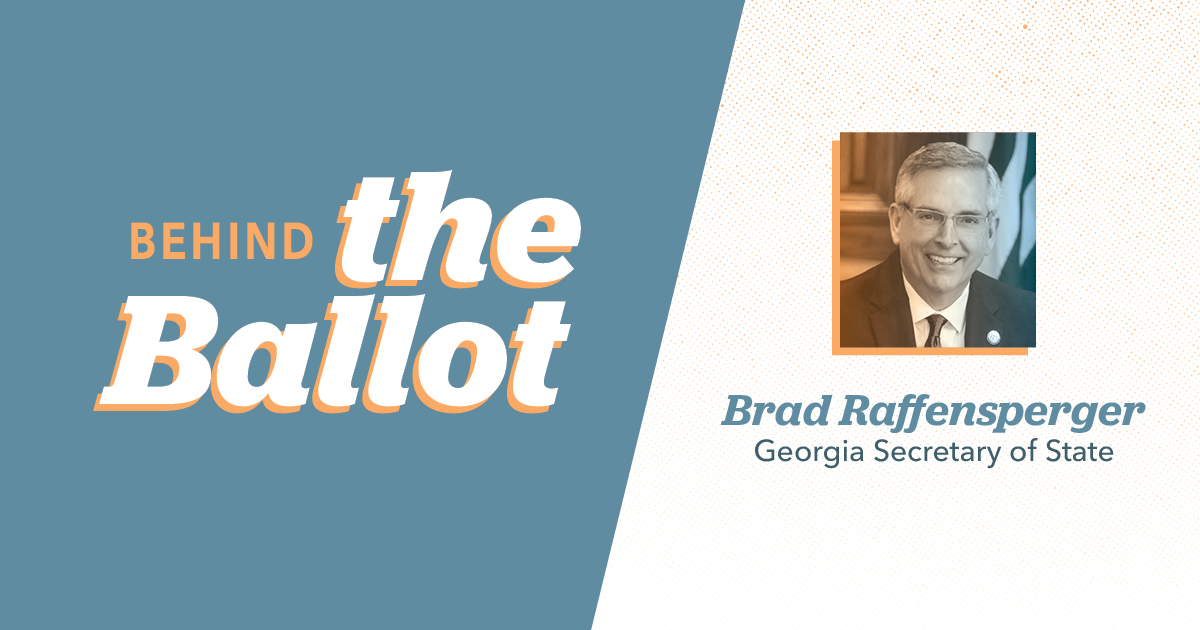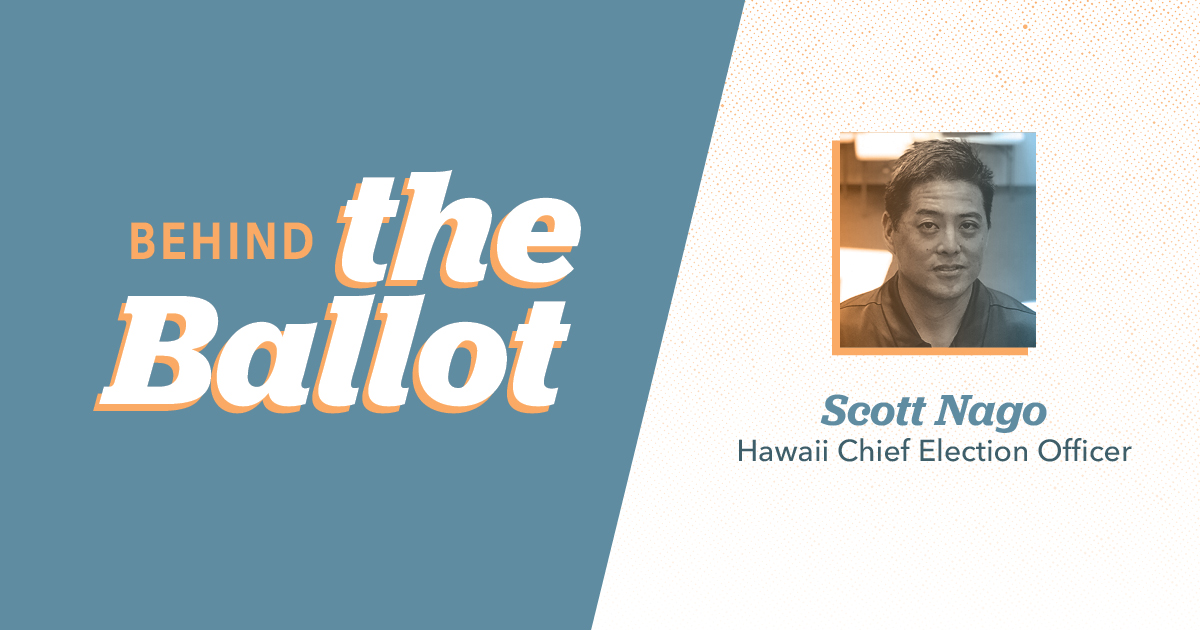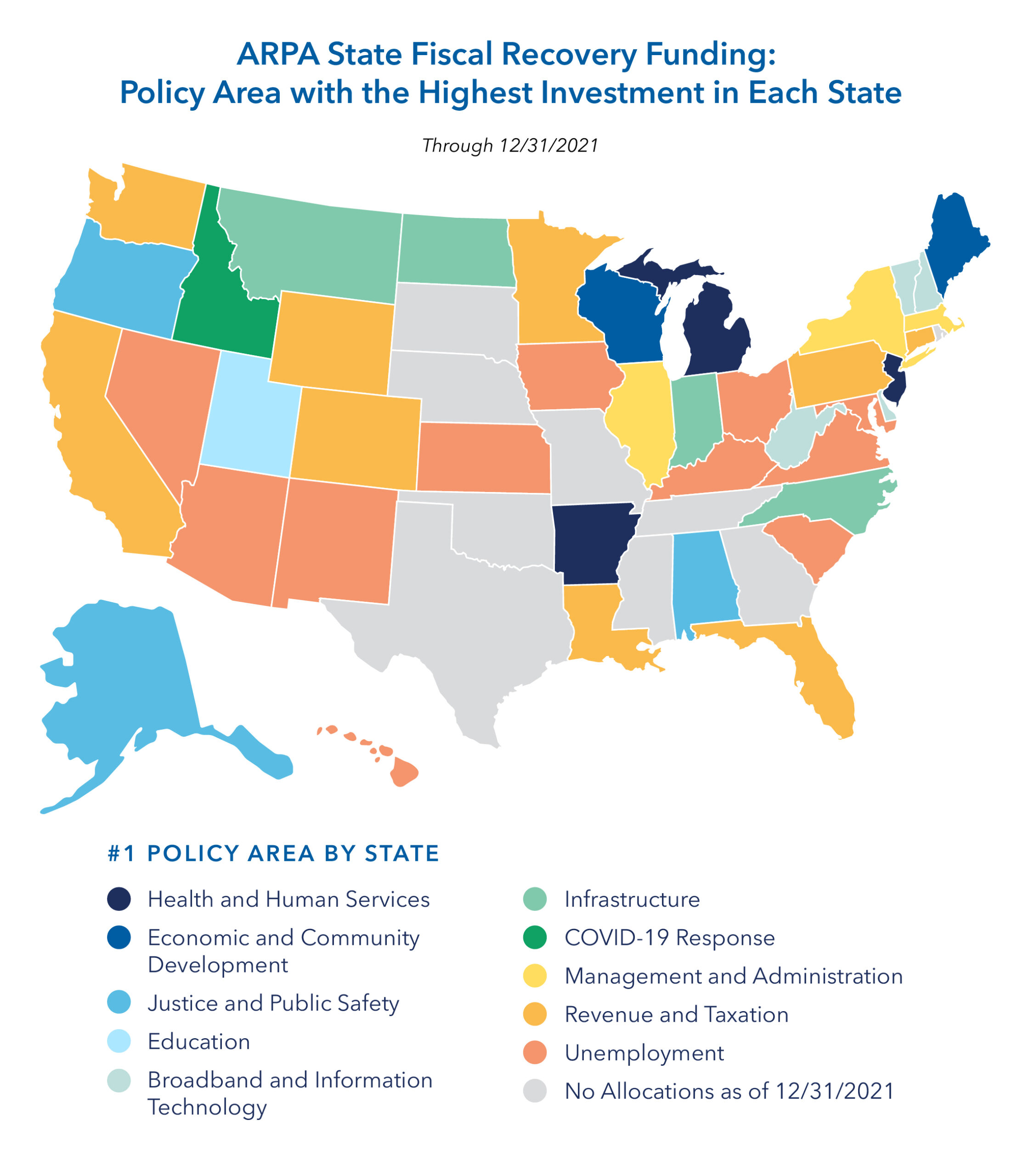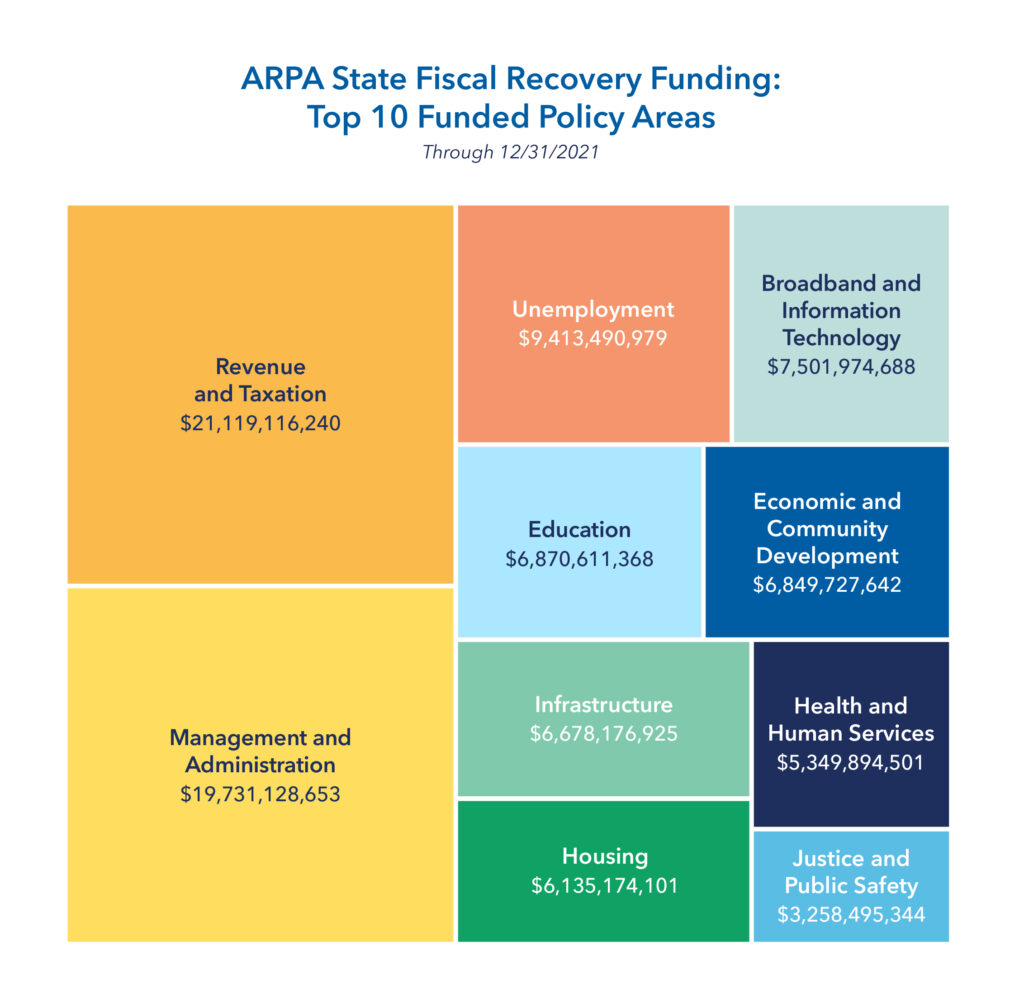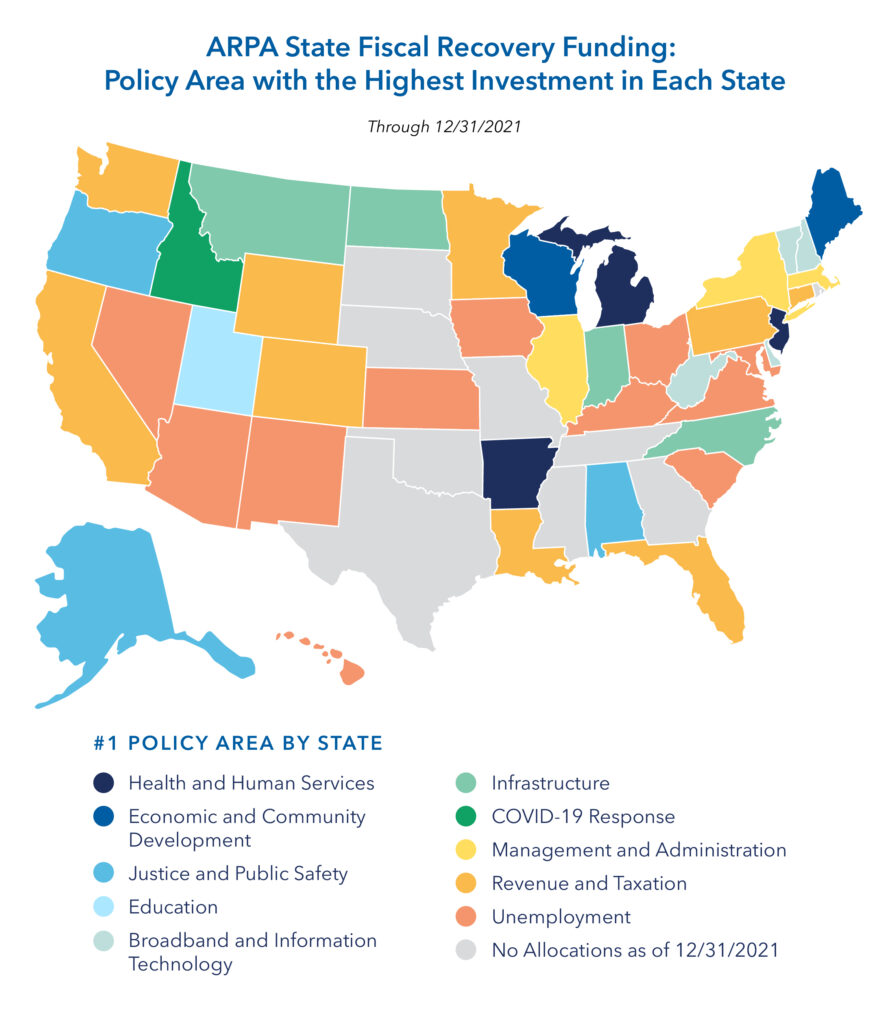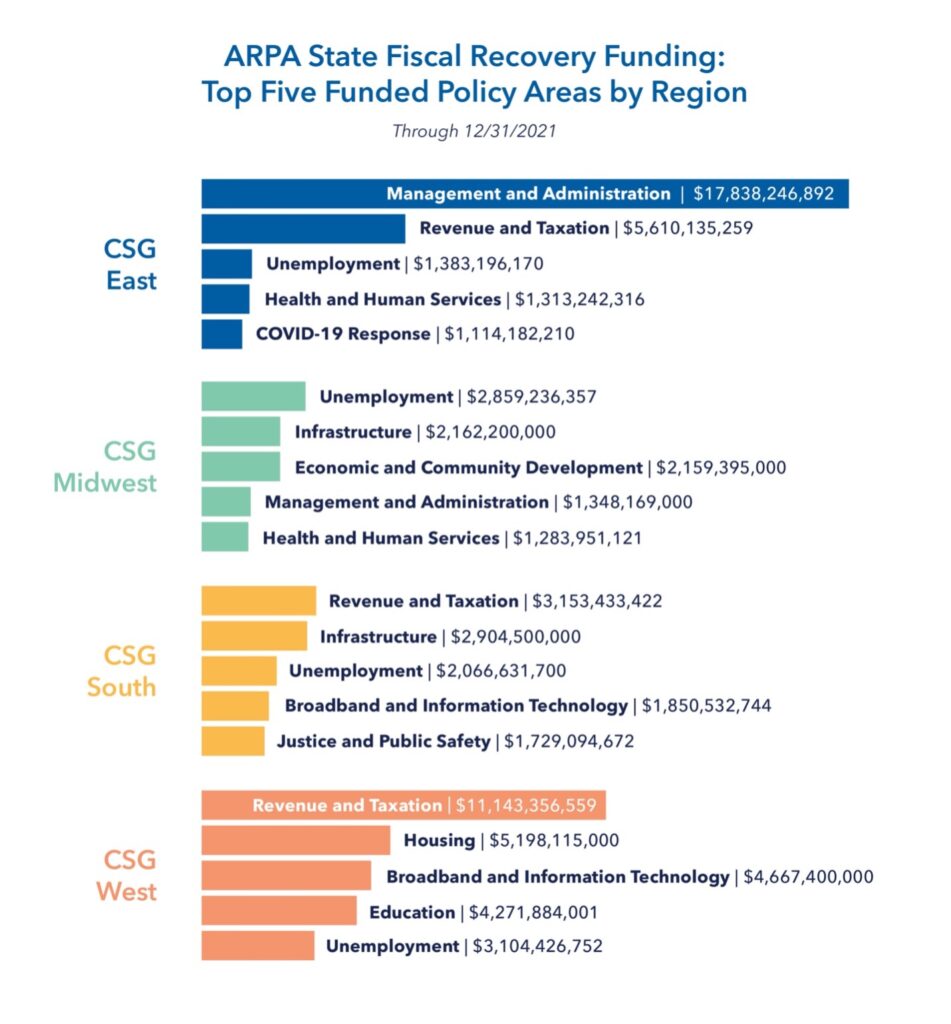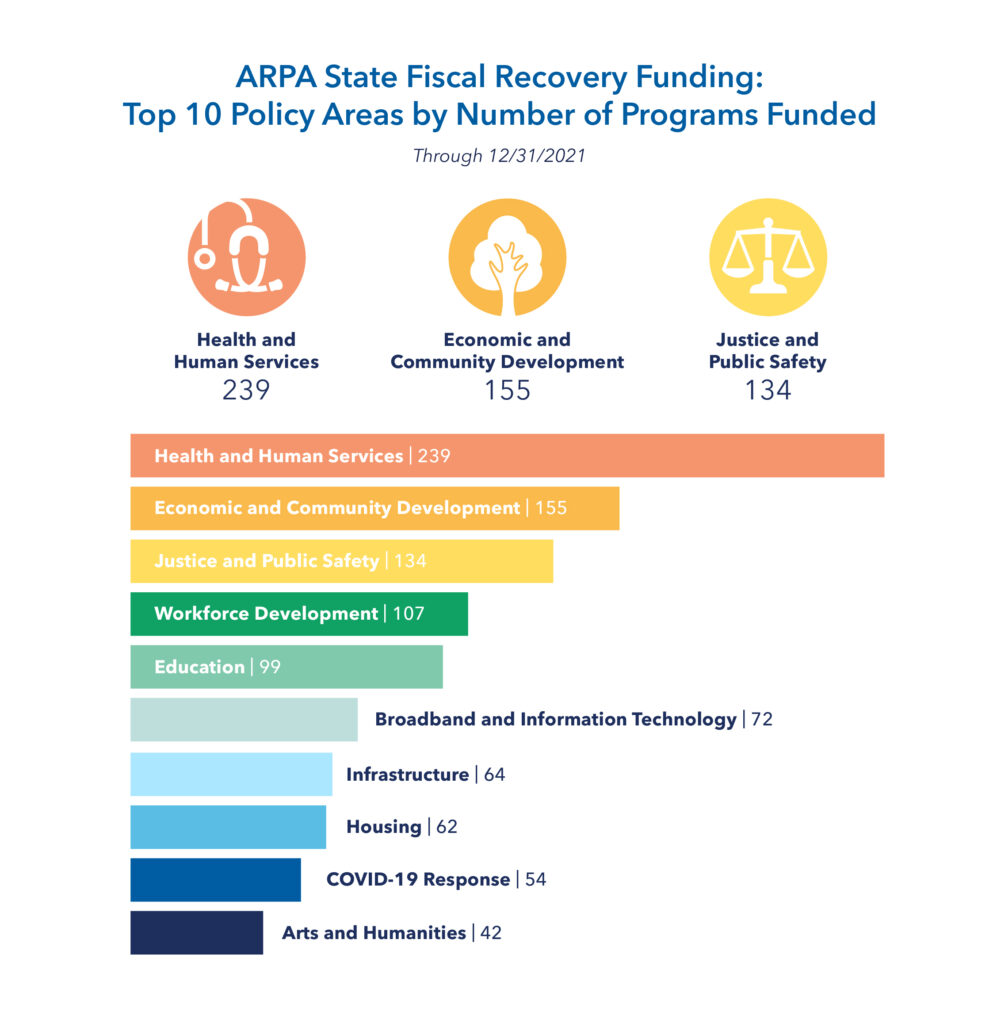By Sean Slone, Senior Policy Analyst
The COVID-19 pandemic has exacted a heavy toll on the mental health of many people living in the U.S., but perhaps none more so than those who have been on the frontlines of protecting the public’s health—first responders, law enforcement officers and the nation’s health care workforce.
A 2021 report from the Centers for Disease Control and Prevention found that the overall prevalence of mental health conditions among public health workers was higher than among the general population. The prevalence of post-traumatic stress disorder (PTSD) symptoms was 10 to 20 percent higher than previously reported for these individuals after months of traumatic and stressful pandemic work experiences.
Researchers in the United States, Europe and South Africa 21 journal article offered a series of policy recommendations for prioritizing the mental health and well-being of health care workers worldwide. Among them:
Enacting national and local evidence-based interventions and programs to support frontline health care workers’ health and well-being in the long-term. Creating national knowledgebases (information, tools and resources) designed to improve the resilience and well-being needs of workers and their leaders in times of crisis, recovery and rebuilding. Ensuring adequate staffing levels in health care systems and fair pay for workers. Encouraging help-seeking and ensuring the availability of mental health resources for frontline health workers in distress. Condemning and combating the stigmatization of frontline health care workers and increasing efforts to de-stigmatize mental health across society. Ensuring a wider and more actionable dialogue about mental health in the workplace.
A number of states have recently worked on legislation that recognizes the toll of the last two years on health care workers, frontline first responders and law enforcement officers. Workers’ compensation laws, PTSD screening and the availability of mental health resources have been particular areas of focus.
California legislators last year debated Assembly Bill 562, which would require the establishment of a mental health resiliency program to provide mental health services to licensed health care providers who provide or have provided “consistent in-person health care services to COVID-19 patients.” Connecticut Senate Bill 1002/House Bill 6595 sought to add to the list of those eligible for compensation for PTSD health care workers engaged in activities dedicated to mitigating or responding to the COVID-19 emergency, as well as corrections officers, emergency medical services personnel and dispatchers who witness certain traumatic events during their employment. A Nebraska bill (Legislative Bill 1133) would include health care workers within provisions of the state’s Workers’ Compensation Act concerning mental injuries and mental illness. The bill notes that “on any given day, first responders can be called on to make life and death decisions, witness a young child dying with the child’s grief-stricken family, make a decision that will affect a community member for the rest of such person’s life, or be exposed to a myriad of communicable diseases and known carcinogens.” The legislative language goes on to say “it is imperative for society to recognize occupational injuries related to post-traumatic stress and to promptly seek diagnosis and treatment without stigma. This includes recognizing that mental injury and mental illness as a result of trauma is not disordered, but is a normal and natural human response to trauma, the negative effects of which can be ameliorated through diagnosis and effective treatment.” Legislation enacted in Nevada in 2021 (Assembly Bill 315) requires the employer of a police officer, firefighter or correctional officer to make available to them during employment, information relating to the awareness, prevention, mitigation and treatment of mental health issues, including post-traumatic stress disorder, depression, anxiety and acute stress. It also requires mental health counseling for these officers within three months of their retirement. The Nevada Psychiatric Association and others recently established a mental health hotline, called Curbside Nevada, for frontline workers in the state. Legislation introduced in New York last year (Assembly Bill 6641) would require any law enforcement officer or emergency medical services personnel to submit to pre-employment mental health screenings and undergo mental health evaluations as part of regular medical examinations in order to monitor changes in their mental health. If diagnosed with post-traumatic stress disorder while on the job, the disorder is presumed to be proximately caused by their employment. Another bill (Senate Bill 1301) passed this year directs the commissioner of mental health to create a workgroup and report regarding frontline worker trauma informed care. South Carolina legislators are considering a workers’ compensation bill (Senate Bill 94) that, for purposes of collecting workers’ compensation, exempts first responders from having to establish by a preponderance of evidence that stress, mental injury or mental illness arising out of or in the course of employment stems from conditions that are extraordinary or unusual relative to the normal conditions of employment. Vermont lawmakers approved and the governor signed Senate Bill 42 in 2021 to create an emergency service provider wellness commission charged with considering the diversity of these providers and the unique needs of those who have experienced trauma and identifying where increased or alternative supports or strategic investments within the emergency service provider community could improve the physical and mental health outcomes and overall wellness of emergency service providers.
To learn more about the policies and programs states can utilize to support worker mental health, read the CSG and the State Exchange on Employment & Disability (SEED) report addressing the Mental Health Needs of Workers Throughout and Beyond the Pandemic and watch our webinar on mental health for employees here.



